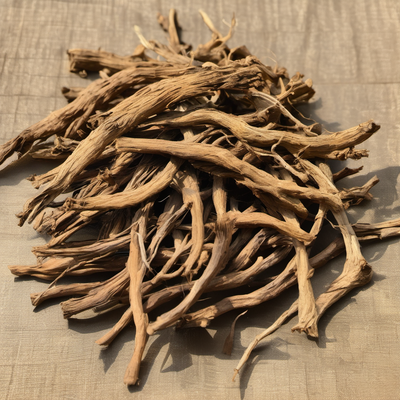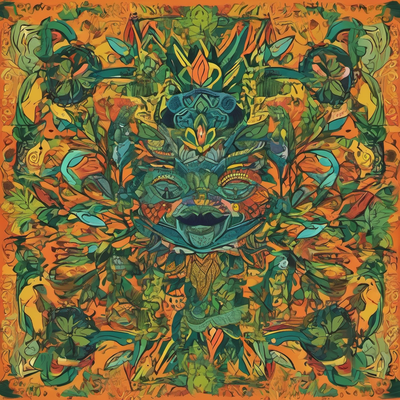
Explore the ancient uses and modern applications of African Dream Root in traditional medicine.
African Dream Root, scientifically known as Silene capensis, is a plant native to South Africa. It has a long history of use in traditional medicine by the Xhosa people.
The Xhosa people, who live in the Eastern Cape region of South Africa, have been using African Dream Root for centuries for its dream-enhancing properties. They believe that the plant has the ability to induce vivid and prophetic dreams, providing guidance and insight.
Traditionally, African Dream Root was prepared by grinding the roots into a powder and mixing it with water to create a milky emulsion. This emulsion was then consumed before bedtime to promote dream experiences.
The use of African Dream Root in traditional medicine has been passed down through generations, with the plant being considered a sacred and powerful tool for spiritual exploration and healing.
In traditional healing practices, African Dream Root is primarily used for its dream-enhancing properties.
The Xhosa people believe that dreams are a gateway to the spirit world and that African Dream Root can help facilitate communication with the ancestors and receive guidance from them.
It is also believed that African Dream Root can reveal hidden truths, provide insight into one's life path, and aid in the resolution of personal and spiritual conflicts.
Additionally, African Dream Root is used for its calming and relaxing effects, helping to relieve anxiety, stress, and insomnia.
The traditional uses of African Dream Root in healing practices highlight its importance in the spiritual and emotional well-being of individuals.
Although African Dream Root has a rich history in traditional medicine, modern scientific research on its efficacy and safety is limited.
However, there is growing interest in exploring the potential therapeutic applications of African Dream Root. Some preliminary studies suggest that the plant may have sedative and anxiolytic effects, which could explain its traditional use in promoting relaxation and sleep.
Further research is needed to better understand the active compounds in African Dream Root and their mechanisms of action. This could potentially lead to the development of new treatments for sleep disorders and anxiety-related conditions.
In addition to its potential therapeutic applications, African Dream Root has also gained attention for its cultural and spiritual significance. It has become a symbol of indigenous knowledge and a focal point for discussions on the preservation of traditional healing practices.
To prepare African Dream Root for use, the dried roots are typically ground into a fine powder.
The powder can be consumed directly or mixed with water to create a milky emulsion, which is the traditional method of administration.
The recommended dosage of African Dream Root varies depending on the individual and their desired effects. It is important to start with a low dose and gradually increase if necessary, as the plant can have potent effects.
It is recommended to take African Dream Root shortly before bedtime to maximize its dream-enhancing properties. It is also advised to create a calm and peaceful sleep environment to enhance the overall dream experience.
As with any herbal remedy, it is important to consult with a healthcare professional before using African Dream Root, especially if you have any underlying medical conditions or are taking medications.
While African Dream Root has a long history of traditional use, its safety profile has not been extensively studied.
As with any herbal supplement, there is a potential for side effects and interactions with other medications. It is important to be cautious when using African Dream Root and to consult with a healthcare professional if you have any concerns.
Pregnant and breastfeeding women should avoid using African Dream Root due to the lack of safety data.
It is also important to source African Dream Root from reputable suppliers to ensure its quality and purity.
Overall, more research is needed to fully understand the safety and potential risks associated with the use of African Dream Root.

Discover the fascinating effects of wild dagga petals and how they can enhance your well-being.
Wild dagga, also known as Leonotis leonorus, is a flowering plant native to Southern Africa. It belongs to the mint family and has been used for centuries in traditional African medicine. The plant is characterized by its vibrant orange or red flowers and aromatic leaves.
Wild dagga has a long history of use among indigenous tribes for its medicinal properties. It is known for its calming and relaxing effects, as well as its ability to enhance mood and creativity. The plant contains various compounds, including leonurine, which is believed to be responsible for its therapeutic effects.
Wild dagga petals have several therapeutic benefits that contribute to overall well-being. One of the main benefits is their calming and relaxing effect on the body and mind. The petals contain compounds that have a sedative effect, helping to reduce anxiety and promote a sense of calm.
Additionally, wild dagga petals have been used to alleviate pain and inflammation. The plant contains analgesic properties that can help relieve headaches, muscle aches, and other types of pain. It is often used as a natural alternative to over-the-counter pain medications.
Furthermore, wild dagga petals have been found to have antioxidant properties. Antioxidants help protect the body against oxidative stress and free radicals, which can contribute to the development of chronic diseases. Including wild dagga petals in your wellness routine may help support overall health and well-being.
One of the most notable effects of wild dagga is its relaxing properties. The plant has a calming effect on the central nervous system, helping to reduce stress and promote relaxation. Many people use wild dagga as a natural remedy for anxiety and insomnia.
The relaxing effects of wild dagga can also extend to the muscles. It is often used to relieve muscle tension and promote muscle relaxation. This makes it a popular choice for those who experience muscle soreness or spasms.
In addition to its physical relaxation benefits, wild dagga can also have a positive impact on mental well-being. It is known to enhance mood and promote a sense of happiness and contentment. Some users report feeling a sense of euphoria after consuming wild dagga petals.
Wild dagga has been traditionally used to enhance mood and stimulate creativity. The plant contains compounds that interact with the brain's receptors, resulting in a boost in mood and creativity.
Many users of wild dagga report experiencing an uplifted mood and increased feelings of happiness and well-being. It can help reduce feelings of depression and anxiety, allowing individuals to feel more positive and motivated.
In terms of creativity, wild dagga has been known to enhance artistic expression and imagination. It can help individuals tap into their creative flow and think outside the box. Whether you're an artist, writer, or simply looking to enhance your creative thinking, wild dagga may provide the inspiration you need.
While wild dagga is generally considered safe when used responsibly, it is important to be aware of potential side effects and take necessary precautions.
Some individuals may experience mild side effects such as dizziness, nausea, or headaches when consuming wild dagga. It is recommended to start with a low dose and gradually increase if needed.
It is also important to note that wild dagga may interact with certain medications or medical conditions. If you have any existing health conditions or are taking medications, it is advisable to consult with a healthcare professional before incorporating wild dagga into your routine.
If you want to purchase the best wild dagga petals in the UK, please visit Herbal Monkey
Furthermore, pregnant or breastfeeding women should avoid the use of wild dagga, as its effects on pregnancy and lactation have not been extensively studied.
In conclusion, wild dagga petals offer a range of potential benefits for overall well-being. However, it is important to use them responsibly and consider any potential risks or interactions. Consulting with a healthcare professional is always recommended to ensure safe and appropriate use.